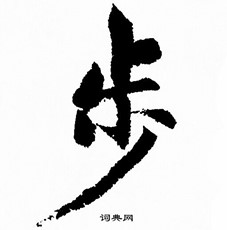Whenever infantry units engage chariot or cavalry forces in combat, they must rely upon mounds and hills, ravines and defiles, forests and trees in order to be victorious. If they encounter level, easy roads they must deploy into a square formation and erect palisades around the perimeter. When the horses, baggage wagons, and infantrymen are all inside, the infantry forces should be divided into holding and assault forces. While the holding forces defend the formation, the assault forces should go forth to engage the enemy in combat. When the assault forces defend the formation, the holding forces should go out to fight.
If the enemy attacks one side, then two of your units should send forth troops, proceeding by way of their flanks to overwhelm them. If the enemy attacks two sides, you should divide your forces and harass them from the rear. If the enemy attacks all four sides, you should redeploy into a circular formation, dividing your troops into four in order to attack them on all fronts. If the enemy flees in defeat, you should employ cavalry to pursue them and have your infantry forces follow behind them. This is the method for certain victory. The Six Secret Teachings states: “When infantry engage in combat with chariots and cavalry, they must rely on hills and mounds, ravines and defiles. If you lack ravines and defiles, then order our officers and troops to set up barriers and caltrops.”
(Translation by Ralph D. Sawyer)
Notes:
· The title, “Infantry” (bu, 步), means basically “to march.“
· The quote is from “The Six Secret Teachings” (Liu Tao, 六韜) – a classic on military strategy attributed to the “Grand Duke“ (Tai Gong, 太公) – from a paragraph on “The Infantry in Battle“ in Chapter VI “Canine Secret Teaching“ (Quan Tao, 犬韜). It is translated in Ralph Sawyer‘s “The Seven Military Classics of Ancient China.“
Original Text:
凡步兵與車騎戰者,必依丘陵、險阻、林木而戰則勝。若遇平易之道,須用拒馬槍為方陣,步兵在內。馬軍、步兵中分為駐隊、戰隊。駐隊守陣,戰隊出戰;戰隊守陣,駐隊出戰。敵攻我一面,則我兩哨出兵,從旁以掩之;敵攻我兩面,我分兵從後以搗之;敵攻我四面,我為圓陣,分兵四出以奮擊之。敵若敗走,以騎兵追之,步兵隨其後,乃必勝之方。法曰:「步兵與車騎戰者,必依丘陵、險阻,如無險阻,令我士卒為行馬、蒺藜。」
Historical Example:
The texts relates how Li Siyuan 李嗣源 (867-933 CE) assisted Li Cixun 李嗣源 in lifting the siege which had trapped general Zhou Dewei 周德威 (d. 919 CE) by deploying a large force of infantry.

